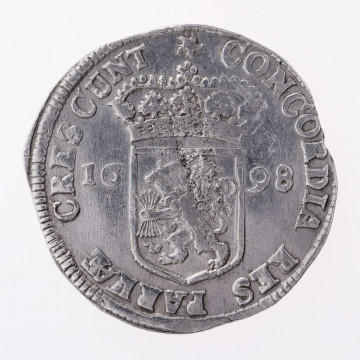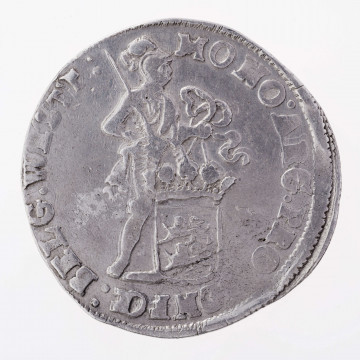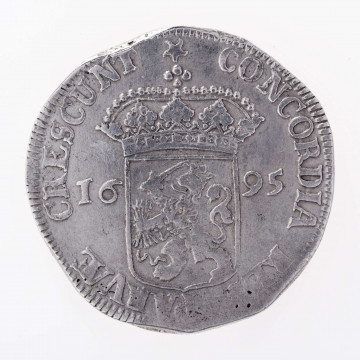
Silver ducat of the Republic of the United Provinces of the Netherlands
1698
National Museum in Lublin
Part of the collection: Treasure of the 16th–17th c. coins from Józefów on Vistula
The creation of silver coins of high purchasing power, equal to gold ducats and guilders, was a consequence of the economic development of Europe in the 15th and 16th centuries. The raw material was provided by large silver deposits discovered in Europe, and especially in Spanish colonies in South America.
The first issues of silver guilders were made in Tirol (1486) and Saxony (1500). Their mass production started in 1518 by Count Stefan in the Schlick municipality, in Sankt Joachimsthal. These coins, called thalers, spread in the central part of Europe, becoming a part of monetary systems of many countries during the 16th century.
In the Republic of the United Provinces of the Netherlands, which won independence from Spanish rule during a decades-long struggle that began in the second half of the 16th century, cities and provinces had a certain degree of monetary autonomy. Hence the multitude of types of thaler coins issued, including the ‘ducaton’, the bust thaler, the silver ducat, the lion thaler, the 30- and 28-stuiver guilder. They differed in their representations and silver content, which affected their purchasing power. The ducat had the highest (30.66 g of silver). The silver ducat discussed here contained 24.60 g of silver. Its bullion standard was modelled on the ‘patagons’ of South Holland, which were common in international exchange. The presence of these coins in the Polish lands was connected mainly with the trade of agricultural products conducted by the Republic of Poland.
Silver ducats are characterised by the representation of a knight in armour with a raised visor, supported on a shield with the coat of arms of the relevant province. The reverse side features a crowned shield with the coat of arms of the United Provinces. The issues of each region were distinguished by the last segment of the legend on the obverse, in translation: ‘NEW SILVER COIN OF THE CONFEDERATED PROVINCES OF BELGIUM AND THE NETHERLANDS’, and on the reverse side: ‘SMALL THINGS GROW’.
The discussed piece is part of a treasure of 83 thaler coins, hidden after 1708 in Józefów in the Biłgoraj region (the Lublin voivodeship), among which 27 are silver ducats of the United Provinces.
The purchasing power of the thaler in Poland at the turn of the 17th and 18th centuries was equivalent to the cost of feeding a man for four weeks.
Tomasz Markiewicz
Author / creator
Dimensions
cały obiekt: width: 41 mm
Object type
numismatic
Technique
stamp minting
Material
silver
Creation time / dating
Creation / finding place
Owner
The National Museum in Lublin
Identification number
Location / status

1698
National Museum in Lublin

1698
National Museum in Lublin

1695
National Museum in Lublin
DISCOVER this TOPIC
Museum of King Jan III's Palace at Wilanów
DISCOVER this PATH
Educational path